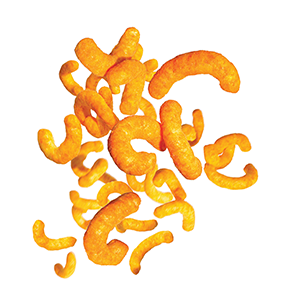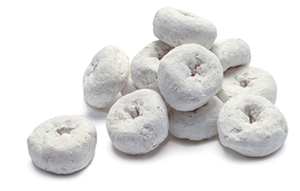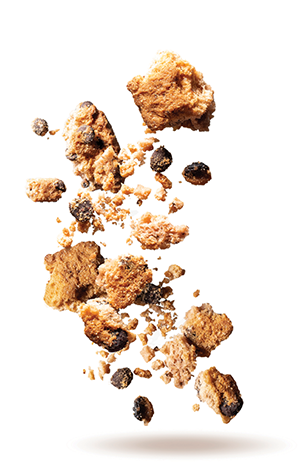Despite inflationary and supply-chain challenges, convenience store operators and suppliers are cautiously optimistic that the 2021 recovery in snack food sales will continue this year. Purchasing trends for salty snacks, packaged sweet snacks, candy and alternative snacks were largely favorable for the first half of 2022, they reported, as store traffic continued to rebuild toward pre-pandemic levels.
The brands with the best in-stock positions are reaping the benefits."
At Rutter’s, snack foods are “off to a great start,” noted Joseph Bortner, center-store category manager, at mid-year. “We’re seeing nearly all categories perform well, both in units and dollars, versus the previous year,” with the highest growth contributions coming from candy, sweet snacks and salty snacks. Improved store traffic is helping to drive the gains, said Bortner, adding, “We’re seeing huge rebounds for some categories that were hurt by the pandemic,” including gum, mints and protein bars.
Greg Hetfield, director of sales, convenience, at Hormel Foods, the marketer of Planters nuts, also noted that early 2022 sales trends in the channel were cause for optimism. “We’re seeing the positive trends from the snack category throughout 2021 continue into 2022 and expect that to keep going so that this will be another positive year in the convenience channel,” he said.
 Indeed, according to CSX data, monthly sales for salty snacks, sweet snacks, candy and alternative snacks for the first quarter of the year were all generally higher than the comparable period in 2021, positioning the categories to capitalize on last year’s rebound. In 2021, average per store, per month sales for all four categories surged at double-digit rates compared with 2020, according to the NACS State of the Industry Report of 2021 Data.
Indeed, according to CSX data, monthly sales for salty snacks, sweet snacks, candy and alternative snacks for the first quarter of the year were all generally higher than the comparable period in 2021, positioning the categories to capitalize on last year’s rebound. In 2021, average per store, per month sales for all four categories surged at double-digit rates compared with 2020, according to the NACS State of the Industry Report of 2021 Data.
“Center-store categories thrived in 2021 as a result of more shoppers’ back-to-normal routines and life getting back to normal compared to 2020,” explained Jayme Gough, NACS research manager. While some packaged sweet snack subcategories that rely on strong morning traffic remained subdued, most snack products thrived, she said, including meat snacks, bagged candy and all salty snacks subcategories. Alternative snacks—which include health and energy bars, as well as meat snacks—“significantly outperformed monthly sales of both 2020 and 2019,” Gough noted.
THE RISE OF ‘SNEALING’
In tough economic times, consumers seek out little, inexpensive ways to treat themselves.”
In addition to recovery from the pandemic, snacks in c-stores are benefiting from several underlying consumer trends. For starters, snacking now rivals mealtime consumption in popularity. According to Hetfield, “consumers’ affinity for ‘snealing,’ or eating snacks as meals, already trending pre-pandemic, has continued to accelerate.” Tina Lambert, vice president, head of marketing, center of excellence at Hostess Brands, added, “Morning snacking is on fire. Today, more people are snacking their way through the morning instead of sitting down for what’s thought of as a traditional breakfast.” As a result, portable, grab-andgo snacking options that require little to no preparation are growing in demand.
Trendy flavors are also contributing to increased snack food sales. At Basecamp Wilson, a full-service c-store and restaurant in Wilson, Wyoming, Mike Patton, compliance manager, remarked that when it comes to salty snacks, “we’re seeing good trends for bold and spicy flavors, particularly among our Hispanic customers.” Younger consumers also prefer bold and spicy flavors, according to Kent Montgomery, head of industry relations at PepsiCo, parent of Frito-Lay, marketer of the Doritos and Lay’s brands. In addition, regional and international flavors continue to grow within the salty snacks category, Gough said, pointing to spices like Old Bay in the Maryland area and tajin, a chili-lime seasoning invented in Mexico and popularized in the U.S. more recently.
While many snacks are considered indulgent, healthier options also have their place. Gough noted that while the pandemic drove many consumers to comfort foods, others were inspired to eat healthier. “There continues to be a lot of buzz around healthy snack items,” she said, “whether that’s due to diets like paleo, keto, vegan or lifestyle choices and preferences.” Hetfield added that protein-based snacks, such as nuts, “are also trending up in today’s market.”
Morning snacking is on fire.”
INNOVATION FILLS VOID
Consumers are always on the lookout to try something new, but they still like their standby snacks. “New products and innovation play an integral part in driving excitement and engagement in any particular category,” remarked Rutter’s Bortner. “You win by maximizing your core, all the while introducing a few new consumers into a category through new products and innovation.” Basecamp Wilson’s Patton said that although new flavors and brands often garner excitement at launch, “after a while, people always go back to SNICKERS. It’s the classics that have staying power.” For that reason, Gough recommended that category managers strike a balance between top sellers and new products. Among the new snack foods recently introduced in c-stores are Lay’s Layers Sour Cream and Onion, Doritos 3D Crunch Chili Cheese Nacho, Planters Sweet & Spicy dry roasted peanuts and caffeinated Hostess Boost Jumbo Donettes.
 For Rutter’s, new snack items are helping to fill the void left by established brands facing supply challenges. “The brands with the best in-stock positions are reaping the benefits,” Bortner said. He and other convenience retailers noted that in addition to supply issues, rising inflation is a concern in 2022. “With gas prices so high, we’re seeing a slow down in snack food sales,” remarked Tracy Auger, owner of River Valley Convenience in Houston, Minnesota. Gough agreed that higher prices for fuel and other goods could indeed negatively impact snack sales. “Snacks are ‘nice to have’ purchases versus ‘need to have,’” she explained.
For Rutter’s, new snack items are helping to fill the void left by established brands facing supply challenges. “The brands with the best in-stock positions are reaping the benefits,” Bortner said. He and other convenience retailers noted that in addition to supply issues, rising inflation is a concern in 2022. “With gas prices so high, we’re seeing a slow down in snack food sales,” remarked Tracy Auger, owner of River Valley Convenience in Houston, Minnesota. Gough agreed that higher prices for fuel and other goods could indeed negatively impact snack sales. “Snacks are ‘nice to have’ purchases versus ‘need to have,’” she explained.
While suppliers concede that the current economic conditions are challenging, snack items are among the goods consumers are loathe to part with when cutting back, they said. “As shoppers continue to prioritize ways to cut costs, especially on discretionary spending, they’re being more diligent in trip planning,” Montgomery noted. “However, salty snacks are still at the forefront of their shopping lists, especially at convenience stores.” Lambert, meanwhile, said packaged sweet snacks provide comfort to consumers during troubling times. “Research shows that during times of uncertainty and stress, consumers turn to brands they know and trust,” she remarked. Moreover, “in tough economic times, consumers seek out little, inexpensive ways to treat themselves,” the Hostess executive continued. “Sweet snacks are seen as a small affordable indulgence by 63% of consumers.”
You win by maximizing your core, all the while introducing a few new customers into a category through new products and innovation."
TARGETED, TACTICAL MERCHANDISING
C-store efforts to further boost sales of snacks range from benign to assertive. Patton said that at Basecamp Wilson, snacks “sell themselves. If someone wants a candy bar, they’re going to come in and buy a candy bar.” At River Valley Convenience, Auger reported, “Displays on the counter definitely help push sales.” And at Rutter’s, Bortner pointed to big success in engaging team members with different incentives and contests. Coupled with queue merchandising, the incentive programs typically result in 300% sales growth on featured brands, he said. PepsiCo’s Montgomery recommended that retailers consider targeted instore messaging and tactical merchandising to further drive sales of salty snacks. “Use occasion-specific messaging,” such as tieins to football tailgating, he suggested. And optimize store and display layouts for dayparts and trip missions, the supplier added. Afternoon c-store trips, for example, are often driven by demand for snacks and soft drinks.
 To that point, bundling snack items with other in-store purchases—whether it’s chips with a deli sandwich, breakfast pastry with coffee, or candy with packaged beverages—can go a long way in growing sales of the products and driving up basket ring. “Snacks aren’t your typical big profit center, such as fuel or prepared foods,” remarked Gough. “But they do allow stores to offer innovation and fun through new flavors and packages. They help to raise the incremental basket.” By bundling with other items, snacks can help enhance “the profit generators” of those other categories, she said.
To that point, bundling snack items with other in-store purchases—whether it’s chips with a deli sandwich, breakfast pastry with coffee, or candy with packaged beverages—can go a long way in growing sales of the products and driving up basket ring. “Snacks aren’t your typical big profit center, such as fuel or prepared foods,” remarked Gough. “But they do allow stores to offer innovation and fun through new flavors and packages. They help to raise the incremental basket.” By bundling with other items, snacks can help enhance “the profit generators” of those other categories, she said.
Rutter’s is already on board with that strategy. Bortner sees opportunity in finding “more creative ways to deliver value through bundling offers of complementary goods and new ways to take brands consumers know and love and twist into new offerings.” Efforts like that can help minimize the sting from current supply-chain and inflationary challenges and keep last year’s momentum behind snack foods going.
